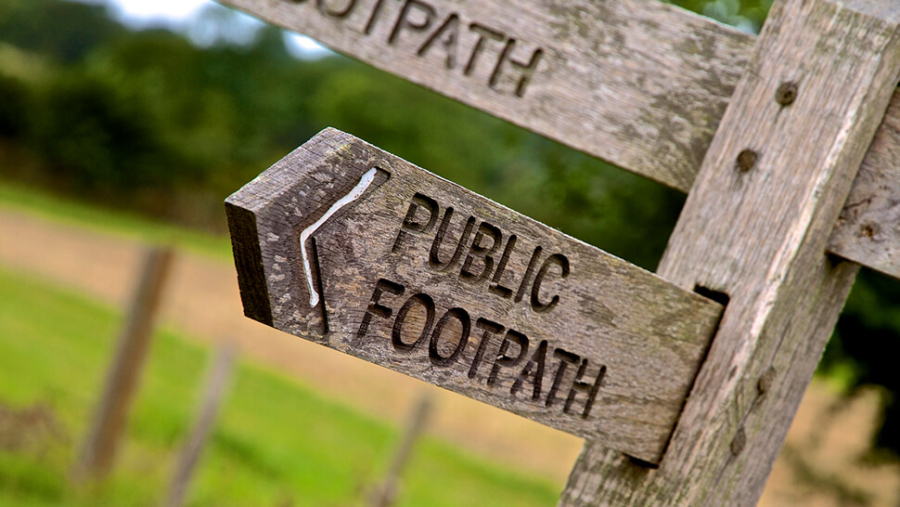

With over 140,000 miles of public rights of way registered in England and Wales, the existence of a public right of way across your land is an issue for many agricultural landowners.
Public rights of way can have a detrimental impact on both the way you intend to use the property and the value of the land. An important change in the law is providing new impetus for Local Authorities and groups of enthusiasts to apply to register new footpaths. This is because a deadline of 1st January 2026 has been set, after which it will no longer be possible to claim new footpaths or bridleways on the basis of historic rights created prior to 1949.
Whilst on the face of things this is good news for landowners, this does mean that we are likely to see a significant increase in the number of applications to register new public rights of way in the next ten years. Many Councils and other bodies are therefore now reviewing all informal tracks and also historic deeds with a view to making applications to register new public rights of way.
Whose right is it anyway?
Although landowners will continue to own the land beneath a public right of way, the existence of the public rights will affect how they can use your land. Whether the right of way is a footpath, bridleway, or byway open to all traffic, it becomes a public highway, meaning that it becomes a criminal offence to obstruct the right of way.
This means you are prevented from putting up walls, fences, or barbed wire such that they could interfere with use of the right of way, and are required to make sure the public highway does not become so overgrown with vegetation that it cannot be used as a public right of way.
It is also an offence to do anything to deter the public from using the right of way. There are, however, rights for landowners to plough public rights of way where they go through the middle of fields and it is necessary for the purposes of good husbandry, but the rights of way must be made good again within a specific time period. Crops must also be sown in such a way to ensure the line of the highway is apparent to members of the public.
It is still possible for private rights to exist over a public right of way. For instance, you may have a private right to drive along a public footpath or bridleway to access your property, which would allow you and your visitors (but not the general public) to drive along the track.
New highways can be created by the land simply being used by people who do not have the landowner’s consent for 20 years without interruption. It is therefore important to ensure that appropriate steps are taken to ensure new rights are not created, where possible.
Getting you on track
When purchasing or leasing a property, a Local Authority search will reveal if there are any registered public rights of way over the property. The search will not, however, reveal any pending applications or any historic rights of way which have not been registered. Inspecting the property could reveal the existence of a public highway which has not been registered, and it is important to obtain as much information as possible from the seller.
Landowners who are concerned about the possibility of a new public right of way being registered over their current land holdings could consider taking overt action to make it clear that no public highways exist over their land, such as erecting notices at the site, locking gates at least once a year, or challenging any members of the public crossing the land.
Another option for concerned landowners is to register a statement with the local authority, stating that they have no intention to dedicate any route over the land as a public highway.










